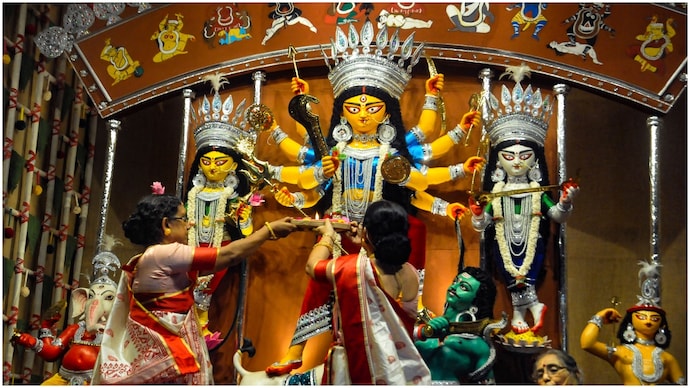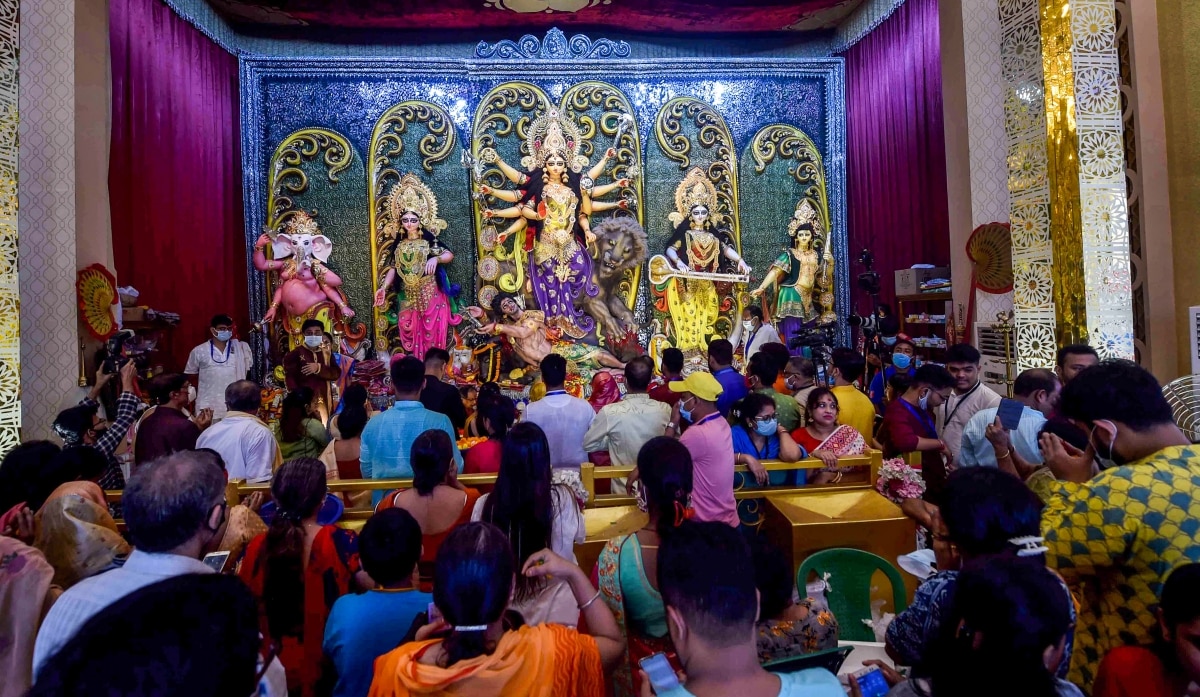What makes Durga Puja so special for Bengalis?
You may have heard the phrase ‘pujor gondho’ and every Bengali can vouch for the fact that it is as real as the sun rising in the east. The year-long anticipation is fast forwarded right from the time when the horizon-caressing fields are scattered with pristine white Kaash phool and Shiuli trees are dotted with fresh bloom.

The moment a Bengali is introduced to a group of people outside Bengal, the first thing they are asked about is Durga Puja. If you are a Bengali, you definitely know what we are talking about and if you are not, let us take you through the bylanes of a much open-ended question- why is Durga Puja so special for the community?
One of the biggest festivals in Bengal, Durga Puja, is a huge carnival for which every Bengali waits eagerly. It doesn’t matter in which corner of the world they reside in, as the moment the month of Ashwin seeps in, the excitement about welcoming Maa Durga follows.
You may have heard the phrase ‘pujor gondho’ and every Bengali can vouch for the fact that it is as real as the sun rising in the east. The year-long anticipation is fast forwarded right from the time when the horizon-caressing fields are scattered with pristine white Kaash phool and Shiuli trees are dotted with fresh bloom. It feels as if the sky is calling out to every Bengali and informing them of the fact- “Maa ashchen” (Mother Goddess is on her way).
THE FESTIVE BECKON

Typing furiously on a keyboard and meeting deadlines seem irrelevant as the date for Durga Puja approaches. A Bengali mind gets swarmed with thoughts like “when will we go home?”, “what new clothes should we buy to look the best for pandal hopping”, “what new food should we try this Puja” and the sheer delight of meeting school and college friends they haven’t seen in a long time. Plans in order, the homesick Bengali soul searches for solace in the countdown to those four days of exhilarating fun and frolic.
The sound of dhaak seems like a homecoming call, inviting everybody to leave all their worries behind and get immersed in the joy of festivities. Speaking of festivities, it would be wrong to compare other auspicious occasions like Diwali and Christmas with Durga Puja, as each festival has its own charm. Let us make the feeling a bit simpler for you.
THAT ‘PUJO, PUJO’ FEELING

During summer holidays, most of us used to wait eagerly for our school to close so that we could visit our grandparents’ house or a relative’s house, where the happiness of being carefree was abundant. Gorging on delicious home-cooked meals and spending hours playing was the source of serotonin and a time all of us looked forward to. Durga Puja is just like that. Along with the religious side, the festival embraces the cultural construct of the community. For us, Maa Durga is the daughter who comes to visit her ‘Baaper baari’ (father’s home) along with her children and brings a treasure trove of jubilation.
ESSENCE OF DURGA PUJA

Apart from the sublime fragrance of Shiuli flowers, the true spirit of Durga Puja is felt right from Mahalaya when Birendrakrishna Bhadra’s Chandipath resonates on the radio sets of every household. Waking up at 4 in the morning and listening to Mahishashuramardini (even on YouTube) guarantees goosebumps- take our word for it.
The Strotrapath in Bhadra’s baritone explaining the triumph of Maa Durga over Mahishashurasura is nothing short of a dive in nostalgia and tradition. “Yaa Devi Sarva-Bhutessu Shakti-Rupenna Samsthitaa, Namas-Tasyai Namas-Tasyai Namas-Tasyai Namo Namah”- ask any Bengali and they will recite this without a single stutter.
Mahalaya is followed by a few more days as pandals and melas are decked up in vibrant lights, giving Bengal the look of a newly-wed bride. The moment one steps foot there, it’s all about the grandeur and pomp of the festival and the last moment preparations to welcome Maa.
HOMECOMING

As people residing in different states flock to their hometowns in the state, boxes of sandesh await them. Days go by and Shashthi approaches. With Durga Maa’s face unveiled, the first day of the celebrations is kickstarted. Various rituals are performed on Shashthi, such as kalprarambha, bodhon, amontron, and odhibash.
Then comes Saptami. The day begins with the immersion of a banana tree in sacred water just around dawn. The tree is then dressed in a saree and worshipped with flowers, incense, and sandalwood paste. The Nabapatrika (leaves from nine plants representing nine forms of Shakti) is made by tying the leaves with Koyala and Aparajita plants. This also represents Goddess Durga’s victory over Mahishasura.
The eighth day of Durga Puja is known as Ashtami and it is regarded as the most auspicious day. Kumari Pujo or Kanya Pujan is also a significant part of Ashtami. It refers to a ritual that involves inviting young girls and worshipping them as avatars of Maa Durga.
After a glorious Sandhi Puja aarti, Navami follows. The day is celebrated as Maa Durga vanquished the demon king Mahishashura. It’s the victory of good over evil and it is the day for new beginnings.
BONG CONNECTION BLUES

The tenth day, also known as Vijayadashami, marks the end of Durga Puja festivities. As kids line up with their books to seek blessings from Maa Durga and women enjoy sindoorkhela, a cloud of melancholy spreads across.
“Pujo sesh,” sighs the soul. The thought of going back to a different city away from home or simply joining office with all the pending work creeps in and Monday morning blues seem petty in front of it.
But Maa departs with the promise of returning again the following year. With chants of “ashche bochhor abar hobe,” Bengalis bid a tearful farewell to Maa Durga after Mahavisarjan.
AN UNMATCHED FEELING
Durga Puja is a time for rejuvenation and resurrection for the tired Bengali soul. The feeling is coupled with enjoyment, gorging on food and pandal hopping.
Heart filled with happiness and a bright smile, the festival equals to the annual elixir that every Bengali swears by.
Maybe we made you emotional, maybe we unknowingly immersed you in a big pool of nostalgia, all we want to say is Durga Puja is an emotion- an unparalleled, irrevocable one.
